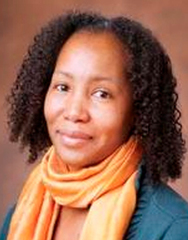Junior Faculty Spotlight: Audrey Bowden
 Each month, the CFT highlights the work of our Junior Faculty Teaching Fellows. This month, Audrey Bowden, Biomedical Engineering, talks about her teaching philosophy and interests.
Each month, the CFT highlights the work of our Junior Faculty Teaching Fellows. This month, Audrey Bowden, Biomedical Engineering, talks about her teaching philosophy and interests.
Having recently moved to Vanderbilt, I feel like a re-entrant to teaching, despite the fact that I have been teaching at the college level for eight years. Therefore, participating in the Junior Faculty Teaching Program was a refreshing opportunity to build a community of supportive colleagues with similar goals and concerns around teaching.
The three highlights of my experience in the program were the consulting sessions, the small group seminar and the teaching visits. Even though the consulting sessions are available to all faculty at Vanderbilt, I likely would not have thought to use them had there not been strong encouragement through the JFTF program. Not surprisingly, I found the sessions extremely useful to address some of the specific teaching challenges I faced, and these experiences have greatly encouraged me to consider utilizing these services even after I have completed the program.
The small group seminar experience was a wonderful chance to share and refine my own thoughts about teaching and learning alongside others who were going through the same process with classes of differing foci. The theme that impacted me the most during our time was that of the benefits and importance of scaffolding information and preparing rubrics / checklists to clarify to ourselves – and our students – how learning would be evaluated. Our discussions around this single concept revealed how scaffolding reflected our own thinking as advanced scholars on the subject at hand, and were a practical way to share the process of approaching the types of complex problems that we encounter in our own scholarship. Similarly, rubrics and checklists provided concrete ways to break down larger, more complex assignments into bite-sized pieces that could be easily accomplished and assessed. They, therefore, serve a practical purpose of simplifying and demystifying achievement of the learning goals; we also discussed different ways to leave flexibility in rubrics to allow for unanticipated variations in performance both within a given rubric category and across the rubric as a whole. This latter concept of enabling nimbleness in one’s teaching – even after the class has begun – is something that I came to the program wanting to better understand so that I could respond to the unexpected challenges that often arise during the semester.
Finally, the teaching visits were a practical way to observe good practices in action, and I have since tried to incorporate several ideas and examples from these visits into my own teaching style. Being on the receiving end of a teaching visit was also quite valuable to get feedback from the perspective of classroom observers. Although I was nervous about the visit, the visitors were all very kind and thoughtful in their feedback; moreover, the opportunity to reflect on my own teaching practice was helpful and important to better solidify my thoughts and goals for the classroom.

Leave a Response